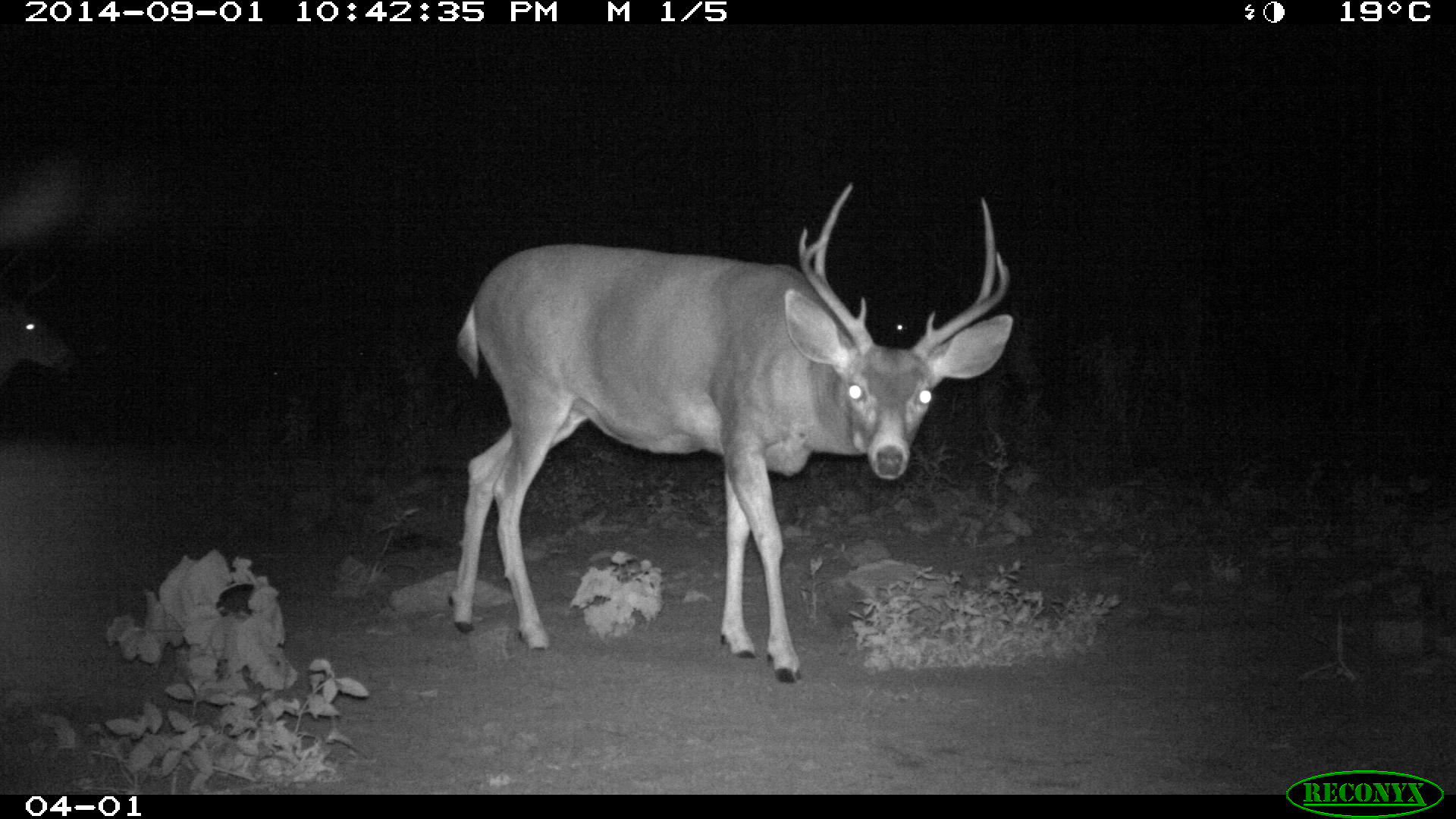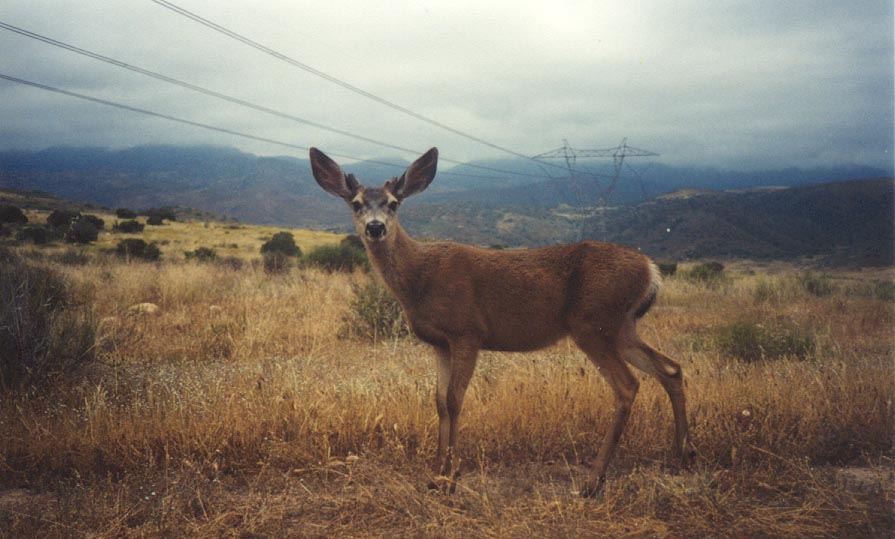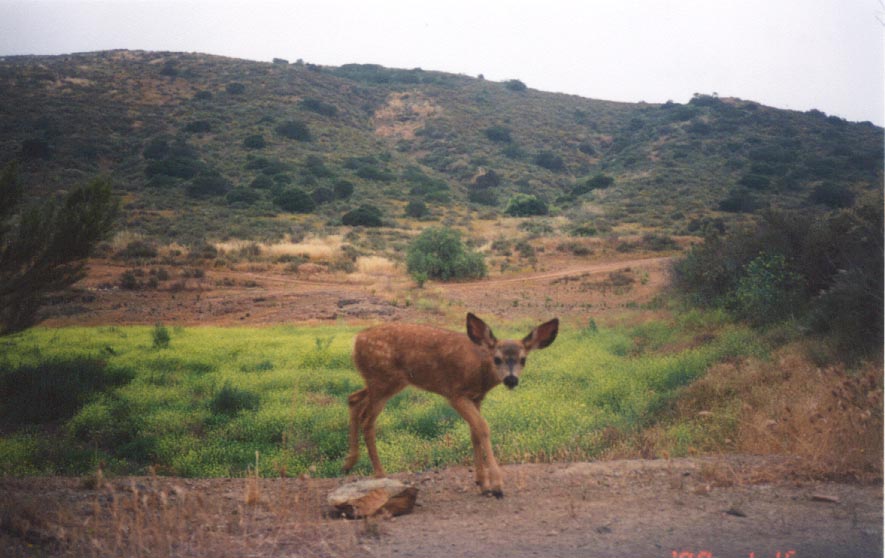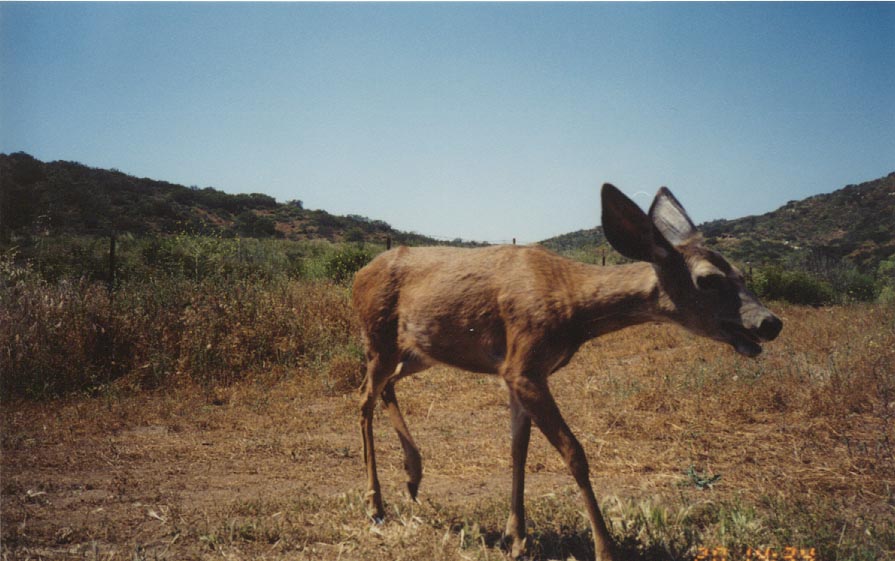Current Distribution Rangewide
Range from the Southern Yukon and Mackenzie south through the western U.S. to western Texas, and throughout Baja Calif. and N. Mexico.[1]
List Status
None
Habitat Affinities
Riparian and oak woodlands, coniferous forest, coastal sage scrub and chaparral; suitable habitat is a mosaic of vegetation, with clearings interspersed by dense brush or tree thickets; brushy areas and thickets are important for cover and thermal regulation; deer require sources of water throughout the year. [1]
Taxonomy and Genetics
Ten valid subspecies of O. hemionus are recognized. O. hemionus fuliginatus is found in southernmost California and Baja Calif. Mexico. [3]
Seasonal Activity
Primarily active in mornings, evenings, and on moonlit nights, but may also be active at mid-day in winter. [1]
Life History/Reproduction
Serially polygynous; rutting season occurs in autumn; a dominant buck tends an estrous doe until matings are completed, or the buck is displaced by another buck; gestation period is 195 to 212 days; fawns are born from early April to midsummer;males and females are mature sexually in their second year; twins are common after the first or second fawning; triplets are rare; mule deer may live more than 10 years in the wild. [1]
Diet and Foraging
Prefers to browse on tender new growth of various shrubs such as ceanothus, mountain mahogany, and bitterbrush; forbs and grasses are important in spring; they feed heavily on acorns where available, primarily in autumn; they also dig out subterranean mushrooms and commonly frequent salt or mineral licks. [1]
Dispersal
Most of the Calif. population is migratory, moving to lower elevations in the fall. However, mule deer in San Diego Co. are non-migratory; typical home ranges are fairly small, about 1.9 mi [2] for males, and 0.6 mi2 for females; does may defend small areas in late spring and early summer when caring for newborn fawns. [1]
Threats
Fragmentation by private property and urbanization could result in local extirpation without appropriate conservation measures. Roads are a significant source of direct mortality and habitat fragmentation. [2] In a study of deer genetics in San Diego Co., a graduate student at SDSU (Anna Mitelberg) found evidence for limited dispersal, a population structure that corresponds to major freeways, and population bottlenecks within the past 60 years. [4]
Special Considerations:
Excerpted from the San Diego MHCP, Volume 2 (see AMEC and CBI 2003 and citations within) - Migration and dispersal corridors that minimize the potential for roadkill are an important component of a preserve design and will benefit mule deer. Mule deer are an important prey for mountain lions. New or realigned roads should be removed from riparian corridors, and properly designed road undercrossings, with wildlife fencing along roadways, should be installed at natural crossing locations to minimize vehicle-deer encounters.
Literature Sources
[1] Ogden Environmental and Energy Services Co., Inc., The Rick Alexander Company, Onaka Planning & Economics, Douglas Ford & Associates, Sycamore Associates, SourcePoint, and CESAR. 1995. Multiple Species Conservation Program (MSCP) Volume 1: Resource Document. Prepared for the City of San Diego. March 1.
[2] AMEC Earth & Environmental, Inc. and Conservation Biology Institute. 2003. Volume II: Final MHCP Plan, Biological Analysis and Permitting Conditions. Prepared for Multiple Habitat Conservation Program. March.
[3] Wilson, D. E.; Reeder, D. M., eds. (2005). Mammal Species of the World (3rd ed.). Johns Hopkins University Press. ISBN 978-0-8018-8221-0. OCLC 62265494.
[4] Bohonak, A.J. 2012. Social Structure and Genetic Connectivity in the Southern Mule Deer: Implications for Management. San Diego State University. Scope of Work. January 27.



